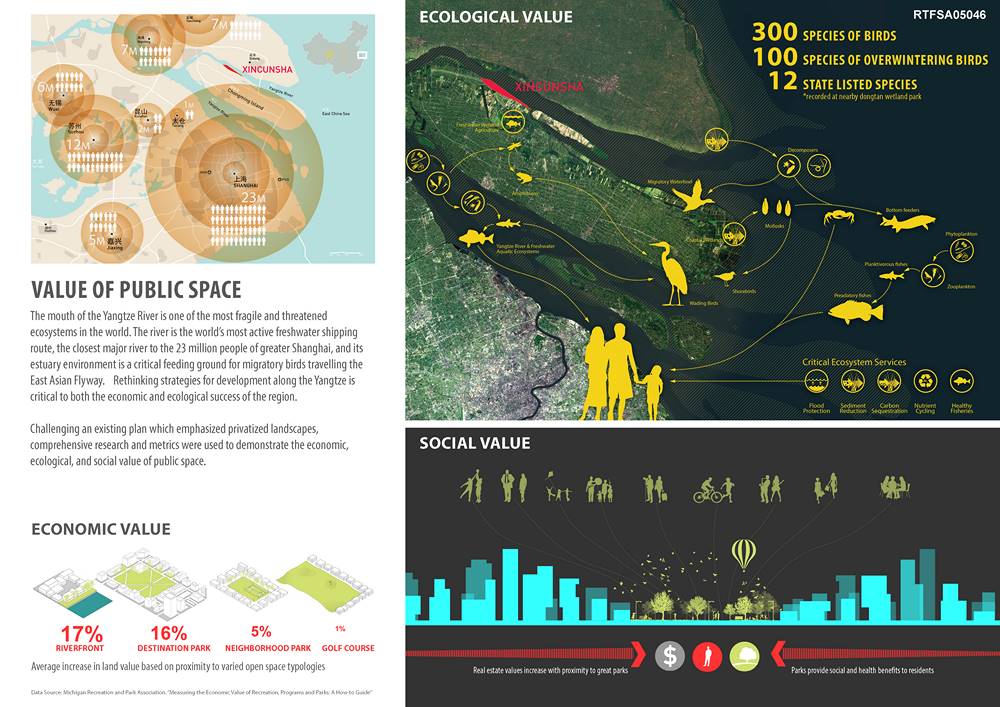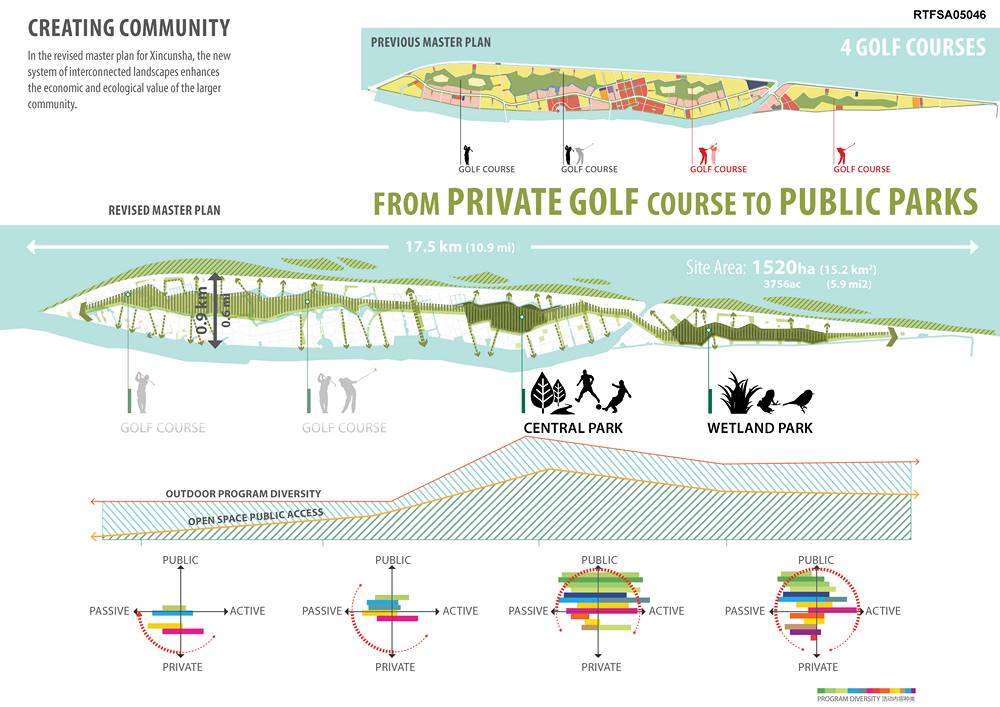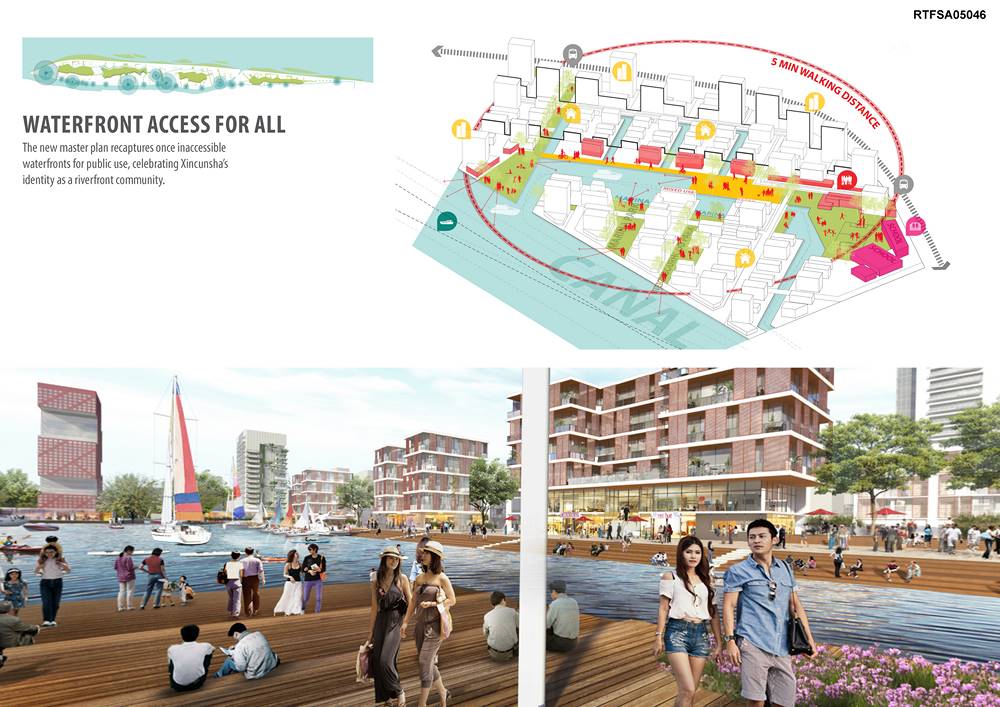The mouth of the Yangtze River is one of the most fragile and threatened ecosystems in the world. The point at which the third longest river on the planet meets the East China Sea is also one of the busiest. The Yangtze River is the world’s most active freshwater shipping route and its estuary environment is a critical feeding ground for migratory birds travelling the East Asian Flyway. As urbanization in China continues its march forward, rethinking strategies for development along the Yangtze is critical to both the economic and ecological success of the region.
Architect: Michael Grove
Country: United States

Prior to the design team’s involvement in the project, an approved master plan established a legal framework for development regarding land use, parcel boundaries, roadway networks, and other guiding elements. Unfortunately, this plan disregarded key site features and overlooked multiple opportunities that could result in a more sustainable development approach. Beyond simply ignoring the ecological significance of the site, its four main open spaces were designated as private land uses (in the form of four golf courses) enveloped by low density residential development. This approach not only blocked views and limited community access to these significant open spaces, but also restricted the potential for hydrological connections and wildlife movement.

Although commissioned to work within the existing framework, the design team felt that the missed opportunities were too significant to overlook, and began a campaign to illustrate a more thoughtful approach to the overall plan. The process began with a study to connect the four internal open spaces, as well as to link them to the waterfronts at the edges of the development. This created a landscape system with a contiguous public realm in the center of the development as well as along its entire waterfront, resulting in 100% of the riverfront edges designated for public use. Additionally, two of the four internal landscapes were completely transformed, replacing the privatized golf course use with a civic park with a multitude of recreational amenities and a wetland park for nature-based education and research. . Ecologically, the reconceived landscapes provide necessary habitat for the river’s diverse ecosystem and function as green infrastructure to receive and treat storm water, resulting in a more resilient development approach. The plan advocates for a diversity of landscapes in terms of scale, function, and program.

The master plan for Xincunsha represents a new way of thinking about the relationship between development and the river. Infrastructure focuses on resilience rather than restraint. Urban design strategies encourage walkability and access to open space. Privatized landscapes are repositioned as public parks for recreation, habitat creation, and nature-based education. The result is a new urban district that is linked to Shanghai with transit, prioritizes the landscape to accommodate and clean storm water, and promotes social engagement with a robust civic program focused around a diverse park system that connects the community to the landscape heritage of the region.
Prev Post
Jinan North District | Sasaki Associates
3 Mins Read





